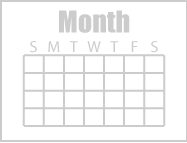| Quadrantids Meteor Shower January 3, 2024 ⬅︎ |
 |
The Challenger
The Quadrantids is the first major shower of the year and it's a strong one with a peak rate of 120 meteors per hour -- that's two per minute! It's active from around Dec 28 through Jan 12.
Despite its high rate, the 'Quads' is a very challenging shower. One reason is that the peak is just hours long instead of days. This means that, unless it occurs during your nighttime on Earth, you'll miss it. The other is that the meteors tend to be very dim and difficult to see unless your sky is very dark.
The shower's radiant is in the Constellation Bootes... so shouldn't the shower be called the Bootids? Long ago, this part of the sky went by a different name, Quadrans Muralis. Either way, the radiant is easy to find using the bright star Alkaid at the end of the handle of the Big Dipper.
Comet 2003 EH1 is believed to be the source of the material for this shower. Although it orbits the Sun in just 5.5 years, it may be a 'dead' comet and no longer releasing debris into space.
| Dates |
Rate |
Speed |
Radiant |
Parent |
2024 Peak |
| Dec 26 - Jan 16 |
120 |
30 mi/s |
Bootes |
Comet 2003 EH1 |
Jan 3/4 |
|
| Viewing Quadrantids Meteor Shower | | Level | Challenging | Rating |  | Best Viewing | Night of Jan 3/4 | | Find | To find the radiant, first find Alkaid, the end star of the handle of the Big Dipper. Then look about 15° in the direction shown above. In the Starry Hill region, the radiant is circumpolar (always above the horizon), but it is low in the northern sky until after midnight where it can be found in the northeast sky.
|  | In general with meteor showers, the best viewing begins after midnight and improves each hour until just before dawn. |  | For 2024, some good news is that the Moon won't be rising until 12:40AM on the 4th which gives lots of viewing time on the evening of the 3rd. Some bad news is that, once the moon rises high, it will be tough to see any but the brightest of meteors. |
|
| More info: All about Shooting Stars, Meteors and Meteor Showers
|



